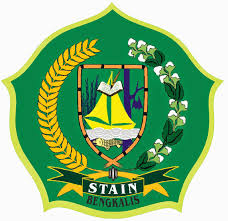Penerapan Model Pembelajaran Cooperative Learning Two Stay Two Stray untuk Meningkatkan Hasil Belajar Matematika Siswa Kelas VIII.A MTsN 1 Bengkalis
DOI:
https://doi.org/10.56633/kaisa.v1i1.195Keywords:
cooperative learning, two stay two stray, matematikaAbstract
Mathematics learning outcomes of class VIII.A students of MTsN 1 Bengkalis are still relatively low and have not reached the minimum completeness for each basic competencies. This is because there are still many students who are not active yet in learning activities and their assumption about mathematics is a difficult subject to understand. This research is a Classroom Action Research conducted in 2 cycles with 6 meetings using the cooperative learning model type two stay two stray with 35 students as research subjects. Data collected by observation technique and tests before the action and in each cycle. The findings of this study were there is an increase in the completeness of mathematics learning outcomes by 31.43% from 28.57% before the action to 60% after the second cycle. The results showed that the cooperative learning model type two stay two stray can improve mathematics learning outcomes.
Hasil belajar Matematika siswa kelas VIII.A MTsN 1 Bengkalis masih tergolong rendah dan belum mencapai ketuntasan minimal untuk setiap kompetensi dasar. Hal ini disebabkan karena masih banyak siswa yang kurang aktif dalam kegiatan pembelajaran serta asumsi siswa yang menganggap pelajaran Matematika adalah pelajaran yang susah dimengerti. Penelitian ini merupakan Penelitian Tindakan Kelas yang terdiri dari 2 siklus dengan 6 pertemuan menggunakan model pembelajaran cooperative learning tipe two stay two stray dengan subjek penelitian berjumlah 35 siswa. Teknik pengumpulan data yang digunakan adalah observasi dan tes sebelum tindakan dan pada masing-masing siklus. Temuan penelitian ini adalah terjadi peningkatan ketuntasan hasil belajar matematika sebesar 31.43% dari 28,57% sebelum tindakan menjadi 60% setelah siklus II. Hasil penelitian menunjukkan bahwa model pembelajaran cooperative learning tipe two stay two stray dapat meningkatkan hasil belajar matematika.
References
Arikunto, Suharsimi. Prosedur Penelitian Suatu Tindakan Praktek. Jakarta: PT. Rineka Cipta, 2010.
Iskandar. Metodologi Penelitian Pendidikan dan Sosial (Kuantitatif dan Kualitatif). Jakarta: Gaung Persada Press, 2009.
Kahar, Muhammad Syahrul, Zakiyah Anwar, and Dimas Kurniawan Murpri. “Pengaruh Model Pembelajaran Kooperatif Tipe Jigsaw terhadap Peningkatan Hasil Belajar.” AKSIOMA: Jurnal Program Studi Pendidikan Matematika 9, no. 2 (June 30, 2020): 279–295.
Lie, Anita. Model Pembelajaran Kooperatif. Bandung: Sutra Benta, 2010.
Menteri Pendidikan Nasional. Peraturan Menteri Pendidikan Nasional Republik Indonesia Nomor 22 Tahun 2006 tentang Standar Isi untuk Satuan Pendidikan Dasar dan Menengah, 2006.
Rahmi, Yulia, and Ilham Marnola. “Peningkatan Kemampuan Membaca Pemahaman Siswa Melalui Model Pembelajaran Cooperative Integrated Reading and Compotion (CIRC).” Jurnal Basicedu 4, no. 3 (May 28, 2020): 662–672.
Readi, Agus. “Implementasi Model Pembelajaran Cooperative Learning dalam Membina Baca Kitab Kuning Santri Ma’had Aly Ula Nurul Qarnain Sukowono Jember Tahun Pelajaran 2020-2021.” At-Ta`lim : Jurnal Pendidikan 7, no. 1 (2021): 16–31.
Sugiyono. Metode Penelitian Pendidikan (Pendekatan Kuantitatif, Kualitatif, dan R&D). Bandung: Alfabeta, 2015.
Wardani. Penelitian Tindakan Kelas. Jakarta: Universitas Terbuka, 2010.
Downloads
Published
Issue
Section
License
Copyright (c) 2021 Firda Iriyany

This work is licensed under a Creative Commons Attribution-NonCommercial-ShareAlike 4.0 International License.

Authors who publish with Kaisa: Jurnal Pendidikan dan Pembelajaran agree to the following terms:
- Authors retain copyright and grant the journal right of first publication with the work simultaneously licensed under a Creative Commons Attribution-NonCommercial-ShareAlike 4.0 International License (CC BY-NC-SA 4.0) that allows others to share the work with an acknowledgment of the work's authorship and initial publication in this journal.
- Authors are able to enter into separate, additional contractual arrangements for the non-exclusive distribution of the journal's published version of the work (e.g., post it to an institutional repository or publish it in a book), with an acknowledgment of its initial publication in this journal.
- Authors are permitted and encouraged to post their work online (e.g., in institutional repositories or on their website) prior to and during the submission process, as it can lead to productive exchanges, as well as earlier and greater citation of published work (See The Effect of Open Access).








